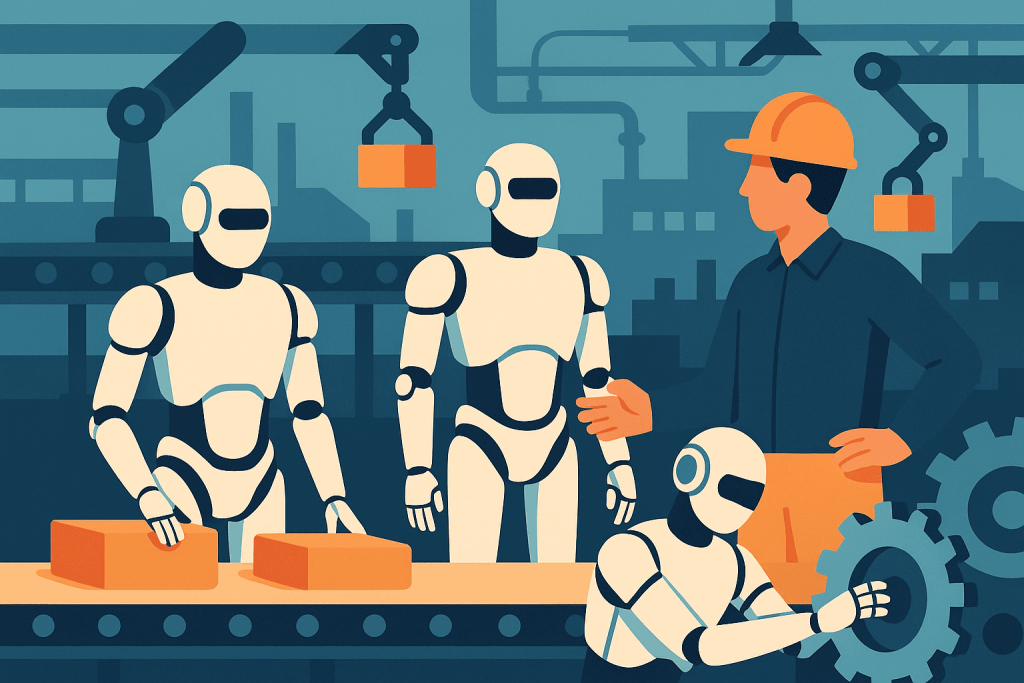
The world has just crossed a historic threshold: for the first time in industrial history, there has been a mass shipment of humanoid robots. UBTECH has announced the completion of its first major commercial delivery of the Walker S2 model — hundreds of robots have already been delivered to customers, and the total volume of contracts for 2025 has exceeded 800 million yuan, which is about 113 million dollars. The robots have been ordered by major manufacturing corporations, logistics operators, and even data centers, and in the coming months the company plans to ramp up to serial production of thousands of units every month. This is the first time in the world that humanoid robots are leaving research labs for real industrial processes — and that is why this news is already being called the beginning of a new era of automation.
A new scale of automation
The delivered Walker S2 models are not laboratory demonstrations but ready “workers” purchased by electronics giants, logistics companies, and industrial manufacturers. Among the clients are global assembly companies, logistics operators, and even data centers. The total order volume for 2025 exceeds 800 million yuan, and thousands of new robots will be rolling off the production line in the coming months. This means that industry is shifting from robotic manipulators to fully autonomous agents capable of replacing human workers not only in performing tasks but also in adapting to the working environment.
Robot brain: what is BrainNet 2.0
Walker S2 operates on the AI-based system BrainNet 2.0 — a software “nervous system” that enables the robot to navigate space, recognize objects, plan actions, and make decisions without direct control. BrainNet 2.0 is an example of so-called “cognitive robotics,” where the machine does not simply follow pre-programmed movements but analyzes the situation in real time. In practice, this means the robot can pick up an object in an unusual position, adjust its motion path, or bypass an obstacle autonomously. These capabilities previously existed only in humans or animals.
24/7 operation without breaks
One of the key technological advantages of Walker S2 is its autonomous battery replacement. While a typical robot must stop for charging, these units simply “remove” a discharged battery and insert a new one, continuing to work without interruption. This allows factories to operate continuously — with no lunch breaks, days off, or night shift gaps. In effect, human physical presence on the production line becomes optional.
This capability turns humanoid robots from promotional exhibits into full-scale industrial resources. Until recently, even the most advanced models could only operate in demonstration mode, but now they deliver a real, economically viable production cycle.
Where thousands worked before
The new robots are already being used in electric vehicle assembly, logistics, and quality control — processes where precision, repeatability, and error-free operation are critical. Automotive companies such as Nio, BYD, and Zeekr deploy robots in areas where assembling a body, fastening a component, or inspecting quality requires high accuracy but not human creativity. Where thousands of people once worked, now only a few operators are needed — supervising their digital colleagues.
An industry becoming autonomous
The deployment of humanoid robots is not just the next stage of automation — it is a fundamental shift in industrial logic. Previously, technologies forced factories to adapt — build new conveyor systems, install special manipulators, restructure the workspace. Today, it works the other way around: the robot adapts to the factory. Because it has arms, legs, sensors, and autonomous navigation, it can be placed into an existing production process without redesigning infrastructure.
This reduces modernization costs, speeds up implementation, and gives even mid-size companies access to opportunities that were once available only to global tech leaders.
What happens next
The key point is the “first mass deployment.” Previously, even wealthy companies could buy a few robots for testing, but no one managed to supply hundreds of working units at once. Now that barrier has been overcome — and it means one thing: industry is entering the phase of autonomy. Over the next 3–5 years, the number of robots in manufacturing may increase tenfold, and companies that fail to adapt will become uncompetitive.
Humanoid robots are not a replacement for all workers. Their value lies in taking over routine, dangerous, and monotonous tasks while humans focus on supervision, development, and creating new products. The successful factories of the future are not “no-human factories,” but factories where people control systems that work independently.
Digital transformation starts with infrastructure
Autonomous robots, artificial intelligence, and production management systems all rely on stable digital platforms. Logistics, quality control, and production lines run on data, servers, and cloud tools. And here is a critical point: an industry shifting to robotic systems is automatically shifting to more complex IT infrastructures.
That is why it is essential today to have reliable technology partners capable of providing stable server capacity, domain services, and hosting for digital systems. If your business is moving toward automation, robotics, or large-scale data analytics, RX-NAME can be a convenient choice — a company that provides domain services, hosting, and server solutions already powering dozens of high-load projects. In the era of robots, the future of industry begins with the right digital foundation — and that foundation can be built today.

Leave a Reply